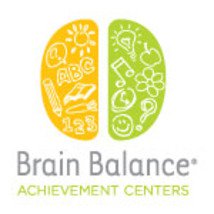Sponsored by Brain Balance Achievement Center
Written by K. Kendall and C. Powell
AtbrBrain Balance, we have a saying: “Better brain, better behavior.” Yet that reallybrdoesn't tell the whole story because even children who do not have a functionalbrdisconnect (right- or left-brain hemispheres that process too slowly) can bebrill-behaved at times. All children and parents struggle with behavioral issues,brbut what are the hidden messages that can be found in this behavior? Kids withbra functional disconnect can pose more of a behavioral challenge than others.
Oppositional behavior happens when the higherbrregion of the brain — the prefrontal cortex — is not strong enough to keep thebrlower brain regions from taking the lead. If it were not for our prefrontalbrcortex, we would all act like toddlers: running around, not sharing, jumpingbrfrom one activity to another on a whim and having very little empathy. Behaviorbris all about brain function, and there is plenty you can do to ensure yourbrchild's brain is functioning at its ultimate capability. First, you need tobrunderstand why your child is acting this way, and second, you must put a planbrof action in place. All children can benefit from surroundings designed tobroptimize brain development and function.
Think about that higher level functioning, orbr“good behavior,” as being the product of the executive function of the brain. If this makes you thinkbrof a little CEO in your child’s brain, you are on the right track. The CEObrdecides the course of action and keeps his team in line. When this process goesbrawry, bad behavior rears its ugly head. Impulsive behavior, failing to considerbrthe consequences of actions and even risky behavior are all examples of badbrbehavior your child can exhibit. These unwanted behaviors are due to yourbrchild’s executive function not keeping them on track.
So you might be asking yourself: Why does thisbrfunction take so long to develop, and what can I do to help speed up thisbrprocess for my kid? One simple answer is that the frontal lobes are the lastbrregions in the brain to mature. The ability to sort out distracting information from meaningfulbrinformation is an important part of our cognitive abilities because much of thebrinformation we perceive isn’t relevant to the tasks that demand our attentionbrat any given moment. Executive function is one of thebrlast brain regions to mature, but if you feel that these steps are not workingbrfor your child, the issue might be larger than you are able to tackle at home.brThe Brain Balance Evaluation will give you insight into your child’s overallbrbrain age and development and determine if additional help is needed to getbryour son or daughter on track. As part of a Brain Balance Program, we test eachbrchild to determine their needs and then coach parents on how to make sure theirbrchildren’s brain’s needs are met. Click here to read this full articlebrand to learn more about how fuel, experiences and expectations all play a keybrrole in better behavior.
A webinar will be broadcast June 26 frombr12:00–1:00 p.m. and a live lecture will be broadcast on June 27thfrom 5:30–6:30 p.m. Brain Balance Southlake encourages parents and educators tobrtune into the webinar and learn more about behavior and why your child may actbra certain way. Parents and educators can also find the latest research and mostbrinnovative approaches concerning learning and neurological disabilities atbrBrainBalanceDFW.wordpress.com. For a full lecture schedule contact Katie Milambrat 817-416-9828 or email BrainBalanceSouthlake@gmail.com.
Brain Balance Achievement Centers offer the Brain Balance Program ® in 54 nationwide locations. The Brain Balance Program® is an individualized and comprehensive approach to helping children with neurobehavioral and learning difficulties surmount their unique challenges.
This proprietary, non-medical program has been successful in helping thousands of kids reach their physical, social/behavioral health and academic potential. We work with children who suffer with ADD/ADHD, Dyslexia, Tourette's, Asperger's and Autism Spectrum Disorders.
